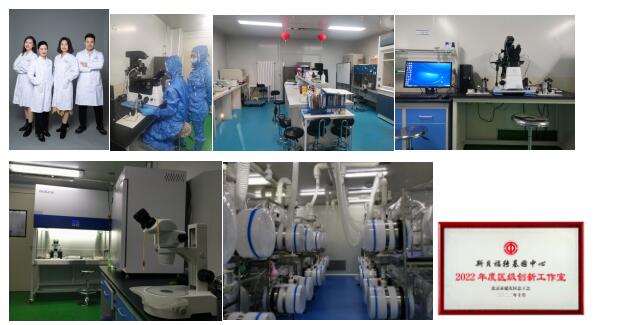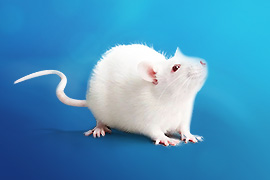The Spafford Transgenic Center was established in April 2020 and is divided into a molecular laboratory, an isolation bag production room (08 workshop), and a hamster breeding room, with a total area of 310m2. The Transgenic Center mainly engages in the development of new gene editing/transgenic animals, genetic breeding of new animal strains, genetic testing of experimental animals, subline identification, genotype identification of mutant animals/gene edited animals, breeding and gene editing of sand rats.
Team Introduction

The team currently has 12 members, including 7 technical personnel and 5 frontline animal production and maintenance personnel. Among them, there are 5 technical personnel with postgraduate education, who graduated from Capital Medical University, Shenyang Agricultural University, Gansu Agricultural University, Inner Mongolia Agricultural University, and Lanzhou University of Technology, respectively.
Team Achievements
Animal Gene Editing Experiment
Transgenic technology refers to a type of technology that artificially introduces exogenous genes into the animal chromosome genome, which can stably express and be inherited by offspring. The general methods of transgenic technology include microinjection of prokaryotic embryonic cells, retroviral vector method, sperm vector method, somatic cell nuclear transfer technology, and embryonic stem cell-mediated gene transfer.
Gene editing technology is a type of technology that precisely modifies the genome, which can achieve precise gene editing at the genome level, such as site-specific InDel mutation, knock-in, simultaneous multi-site mutation, and small fragment deletion. ZFN, TALEN, and CRISPR/Cas9 are the three major gene editing technologies, which essentially use non-homologous end joining (NHEJ) repair and homologous recombination (HR) repair, combined with specific DNA targeting recognition and endonuclease to complete DNA sequence changes.
The laboratory has currently applied for a patent for the invention of hACE2 mice animal model.

2. Genetic testing.
In order to ensure the genetic quality of the experimental rats and mice produced and sold by Spafas, the laboratory has established a rapid, non-invasive, high-throughput, and accurate SNP-d genetic quality evaluation technology method d on the Chinese standard "GB14923-2010 Genetic Quality Control of Mammalian Experimental Animals" and combined with domestic and foreign literature and independent research and development. On this basis, five enterprise standards for Spafas rat and mouse breeding and genetic quality control have been established: "Q/BZ2021-0001 Inbred Strain Mouse Breeding and Genetic Quality Control"; "Q/BZ2021-0002 Closed Colony ICR Mouse Breeding and Genetic Quality Control"; "Q/BZ2022-0001 Closed Colony KM Mouse Breeding and Genetic Quality Control"; "Q/BZ2022-0002 Inbred Strain Rat Breeding and Genetic Quality Control"; and "Q/BZ2022-0003 Closed Colony Rat Breeding and Genetic Quality Control".
3. Strain and sub-strain identification.
Inbred strains are obtained by mating full siblings for 20 consecutive generations or more, and all individual animals can be traced back to a pair of common ancestors from 20 generations or later, with an inbreeding coefficient of over 98.6%. There are various inbred strains of rats and mice in the current market. Within an inbred strain, residual heterozygosity or mutations can lead to the formation of substrains with partially different genetic coms. Additionally, strains that have undergone technical manipulation are usually referred to as sublines. Changes in the rearing environment or technical manipulation may affect certain biological characteristics of the animals. Different strains or substrains of experimental animals may not react the same way to the same experiment. To differentiate commonly used experimental rats and mice from a genetic perspective, we have developed multiple genetic testing methods, five of which have been patented.
Breeding and genotyping of genetically edited animals
Different breeding and genotyping plans need to be developed for different animals, such as genetically edited animals, transgenic animals, and gene-mutated animals, due to different gene editing methods, different effects of genes on development, and the number of mutated genes. The laboratory provides specialized breeding and breeding plans for different animals, and develops targeted genotyping methods.
-
 Wistar RatDeveloped by the Wistar Institute in the United States in 1907. In 2019, SpePharm (Beijing) Biotechnology Co., Ltd. introduced breeding from the National Rodent Laboratory Animal Seed Center.More
Wistar RatDeveloped by the Wistar Institute in the United States in 1907. In 2019, SpePharm (Beijing) Biotechnology Co., Ltd. introduced breeding from the National Rodent Laboratory Animal Seed Center.More -
 ICR miceIn 1926, the Rockfeller Institute of the United States introduced albino mouse from Switzerland to breed Swiss mouse; in 1948, it was introduced by the Philadelphia Cancer Institute and bred Ha/ICR. In 1973, it was introduced into China and in 2011, SPF (Beijing) Biotechnology Co., Ltd. introduced it from the National Rodent Experimental Animal Seed Center and bred it.More
ICR miceIn 1926, the Rockfeller Institute of the United States introduced albino mouse from Switzerland to breed Swiss mouse; in 1948, it was introduced by the Philadelphia Cancer Institute and bred Ha/ICR. In 1973, it was introduced into China and in 2011, SPF (Beijing) Biotechnology Co., Ltd. introduced it from the National Rodent Experimental Animal Seed Center and bred it.More








